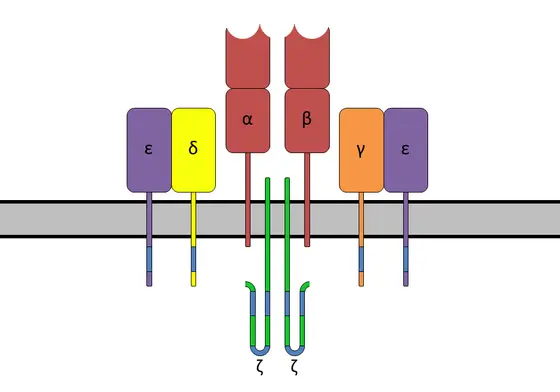Every human being is unique – especially in molecular terms: every 100th to 300th building block in the genome differs from one human to another. Molecular individuality is particularly pronounced at the level of the genetic material for the immune system's receptor proteins.
Among these very diverse receptors are T cell receptors as well as antibodies. “This immune receptor diversity is immensely important because it allows exact recognition of the largest possible number of different exogenous substances,“ explains Manfred Schmidt from the National Center for Tumor Diseases (NCT) Heidelberg.
The extreme diversity of the T cell receptors has a genetic basis. Each T cell, however, has receptors of a single specificity only. “The specificity and the frequency of the receptor genes together provide an exact picture of the individual's T cell repertoire. From the frequency with which individual T cell clones occur we can draw conclusions about diseases and the success of therapy,“ says Schmidt.
Analyzing the highly variable segments of the T cell receptor genes and accurately determining their frequency is a major scientific challenge. The scientists in the groups of Manfred Schmidt and Christof von Kalle, Director of the NCT, have succeeded in developing a new method* with which they can provide precise sequence analyses of the T cell repertoire.
The two initial authors, Eliana Ruggiero and Jan Nicolay, first tested the method in immune cells from the blood of six healthy donors. As expected, the samples they studied displayed polyclonality: the scientists found thousands of different T cell clones in each of the donors.
By studying the blood of persons infected with the widespread cytomegalovirus (CMV), they were able to elucidate how an infection affects the T cell repertoire (TCR). The researchers treated these blood cells with a mixture of peptides representing the virus's various antigens, thus simulating the effect of a vaccine. Shortly after the peptides were added, the proportion of those T cells directed against CMV increased, reaching almost 100 percent within about two weeks.
On the basis of TCR investigations in the blood of ten patients suffering from an aggressive T cell lymphoma, the researchers were able to measure by how much the disease reduced the normal T cell repertoire.
“With the new amplification and sequencing method, we can now see, for instance, how the immune system of patients with a serious infection combats the pathogens,“ explains Christof von Kalle. “The same approach can be taken in patients with autoimmune diseases to determine which T cell clones attack endogenous tissues; doctors can observe the status of the malignancy in lymphoma patients.“ For cancer physicians such as von Kalle, the use of this method in tumor immune therapy is particularly promising: they can now determine the DNA sequence of the T cell receptors that are most effective against the tumor and possibly even artificially replicate them. The huge advances made in the sequencing of DNA and RNA – the authors agree – will in future help medical science gain an even deeper understanding of the human immune system.
* TCR ligation anchored-magnetically captured PCR (TCR-LA-MC PCR)
Eliana Ruggiero, Jan P. Nicolay, Raffaele Fronza, Anne Arens, Anna Paruzynski, Ali Nowrouzi, Gökçe Ürenden, Christina Lulay, Sven Schneider, Sergij Goerdt, Hanno Glimm, Peter H. Krammer, Manfred Schmidt, Christof von Kalle: High-resolution analysis of the human T-cell receptor repertoire. Nature Communications 2015, DOI: 10.1038/ncomms9081
